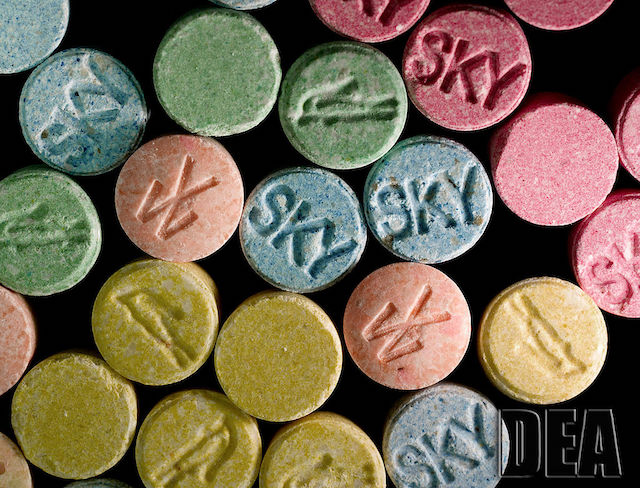Ecstasy. Molly. The Love Drug.
You’ve probably heard of 3,4-Methylenedioxymethamphetamine, or MDMA for short, but you may not have known that the drug notorious in rave culture had any therapeutic potential at all.
Like many other things, I learned about “E” through the movies. As it goes, a character is offered ecstasy as tiny pills in a rainbow of colors, each with a smile imprinted on the face. With a brief hesitation, said character pops one in their mouth and enters an altered state of mind. But the character’s experience is never the same from one film to the next. Ecstasy is a fun, party drug in “The Interview,” a disconnecting depressant in “Garden State,” and a downright creepy hallucinogenic in “Black Swan.”
These portrayals were enough to dissuade me from ever partaking.
When I first heard about MDMA for therapy, it sounded dangerous and illicit. However, when ENDPAIN, an online platform for building community and understanding around pain and healing, green-lighted the production of a short documentary exploring a clinical trial conducted by MAPS (Multidisciplinary Association for Psychedelic Study) in which the drug is used as a treatment for PTSD, I realized there was more to learn.
The film, titled “MDMA: Stories of Treatment,” reveals the drug’s capacity to be used in a supportive therapeutic context for integrating physical and emotional traumas:
For the cold opening, the production team took to the streets to find out what the public thought about MDMA. Not unlike myself, there was confusion and misconception. For most people, ecstasy was just something to use if you wanted to let loose. Coincidentally, the team ran into Waylon Lewis, the founder of Elephant Journal, who cheekily shared in the film, “I think it’s just a good time and it’s a party and it’s fun!”
To understand how we got here, we first must know the history of MDMA. In 1912, a German chemist first synthesized the drug. The drug works by releasing the neurotransmitters serotonin, dopamine, and norepinephrine in the brain, creating that happy and euphoric feeling associated with the drug. However, the drug remained relatively unknown until the 1970s when it was re-discovered by a psychotherapist who identified its therapeutic value. Ten years later, it took off in the party scene and was ultimately classified as a Schedule I drug by the FDA, dismissing its therapeutic potential.
Fortunately, a small group of scientists and therapists continued to advocate for its use in the clinical setting. In August 2017, the FDA reclassified the drug with a “breakthrough” status, a designation only given to a drug when trials indicate that it significantly more effective than current treatments and protocols.
In “MDMA: Stories of Treatment,” we meet two individuals suffering from PTSD: James, a veteran who underwent the traumas of war, and Karen, who experienced sexual abuse as a child and later battled addiction. James and Karen explain how their respective traumas severed their connection to their emotions—a common psychological phenomenon that sufferers of PTSD develop in order to cope with their pain—and how MDMA helped free them of their symptoms of PTSD.
While it may be hard to imagine how something like MDMA works in therapy when it’s so closely associated with recreational-use, it is actually quite a simple mechanism. In short, patients are given clinical doses of MDMA within the context of a therapy session. When the brain’s natural barriers are down and those “feel-good” neurotransmitters are swimming around, it becomes much safer for the patient to recall and dialogue about traumatic experiences. In this state, the patient and therapist can work through those emotions and feelings without the desire to run away from or become defensive around those memories. When the session is over and the patient files away those memories, the brain rewires itself to associate new, more pleasant emotions with those memories.
As the film shows, the subjects leave therapy with a restored connection to their emotional being, and a newfound perspective on themselves and their past traumas. It’s only after re-examining herself through the lens granted by MDMA that Karen sees herself as “a beautiful bud on a stem” after spending her entire life living in self-judgment.
Seeing these two individuals tell their stories of profound transformation was enough for me to reconsider my own feelings and assumptions about MDMA.
To watch the full movie, click here.
~
~
Author: Robyn Carey
Image: Wikimedia
Editor: Callie Rushton
Copy Editor: Catherine Monkman
Social Editor: Waylon Lewis











Read 0 comments and reply